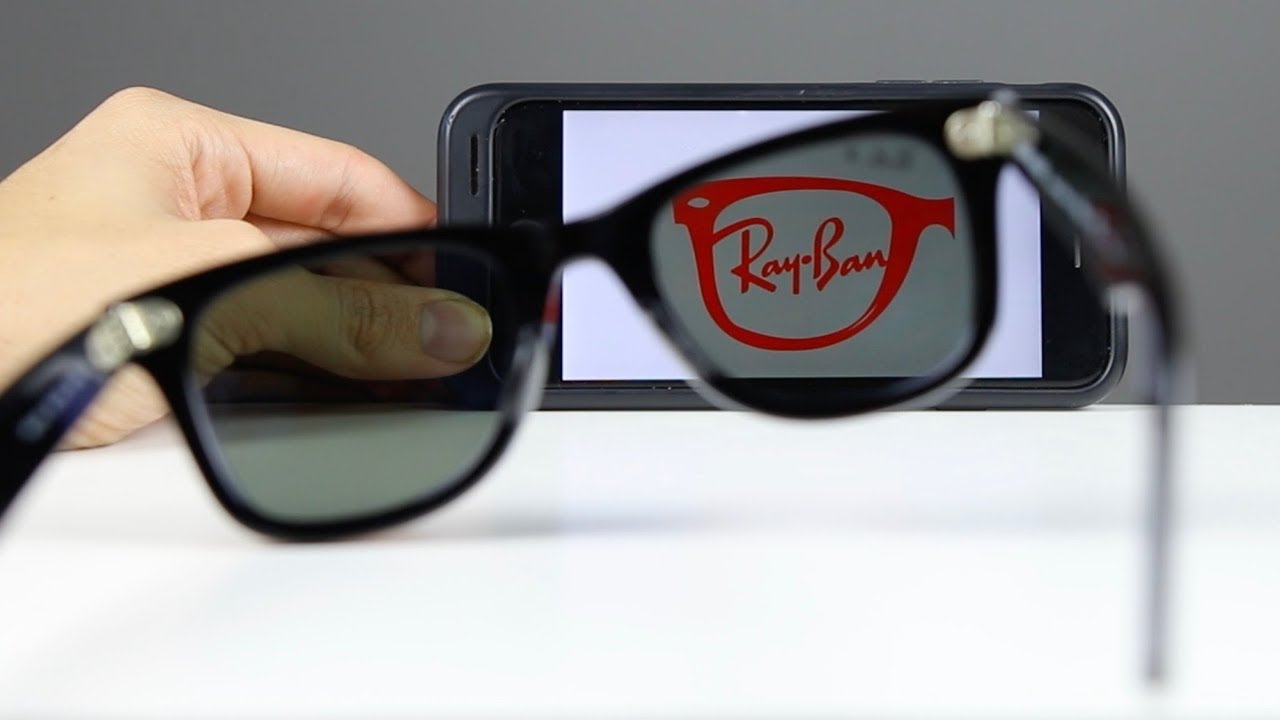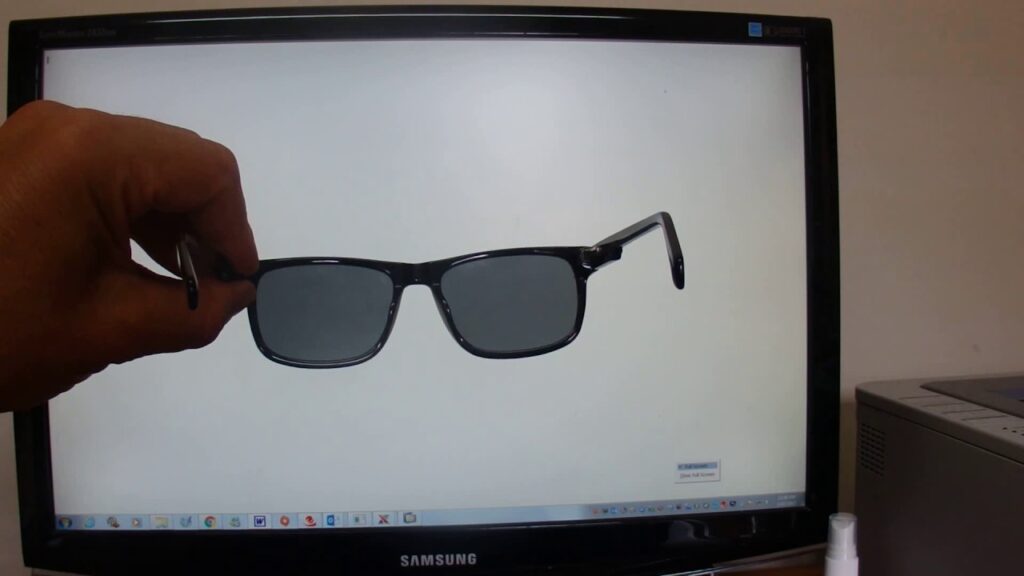In our increasingly sun-drenched world, where outdoor activities, driving, and even simple walks are part of daily life, sunglasses have evolved from mere fashion accessories into essential tools for eye protection and enhanced visual comfort. Yet, not all sunglasses are created equal. A critical distinction lies in whether they are polarized or not. This seemingly technical term holds the key to significantly reducing glare, improving clarity, and providing a more comfortable visual experience. Glare, the intense, blinding light reflected off surfaces like water, snow, roads, or car hoods, is not just annoying; it can be dangerous, obscuring vision and increasing the risk of accidents. Standard tinted lenses simply reduce the amount of light reaching your eyes, making things darker, but they do little to combat this specific type of reflected glare.
The market is flooded with countless options, ranging from inexpensive drug store finds to high-end designer brands. With so much variety, consumers often struggle to discern true quality and functionality. Many assume that a dark tint or a high price tag automatically equates to superior performance, including glare reduction. This misconception can lead to disappointment and, more importantly, a lack of adequate protection for their eyes. Understanding the difference between a standard tinted lens and a polarized one is paramount for anyone spending time outdoors. It’s not just about comfort; it’s about safety, visual acuity, and long-term eye health.

The relevance of polarized lenses extends across numerous activities. For drivers, they can dramatically reduce blinding reflections from wet roads or other vehicles, making commutes safer. Anglers and boaters find them indispensable for cutting through water glare, allowing them to see beneath the surface. Skiers benefit from reduced glare off snow, enhancing contrast and depth perception on the slopes. Even for casual use, polarized lenses can alleviate eye strain, especially during extended periods in bright conditions. However, the challenge lies in identifying genuine polarized lenses amidst a sea of imitations or simply non-polarized alternatives. Without clear indicators on the product itself, or an understanding of how polarization works, consumers are often left guessing. This comprehensive guide aims to demystify the process, providing actionable steps and insights to help you confidently determine if your sunglasses are truly polarized, ensuring you make an informed choice for your visual well-being.
Understanding Polarization and Its Unmatched Benefits
To truly appreciate the value of polarized sunglasses, one must first grasp the concept of light polarization itself. Light travels in waves, and these waves typically vibrate in all directions. When light hits a flat surface, such as water, snow, or a road, it often becomes polarized, meaning the light waves vibrate predominantly in a single, horizontal plane. This horizontally vibrating light is what we perceive as glare – an intense, often blinding reflection that can severely impair vision and cause discomfort. Standard tinted sunglasses merely reduce the overall intensity of light, making everything darker, but they do not specifically filter out this problematic horizontal glare. They are akin to turning down the brightness on a screen, rather than fixing a specific visual anomaly.
Polarized lenses are engineered with a unique, vertically oriented filter. Imagine a venetian blind with its slats positioned vertically. This filter works like a microscopic sieve, blocking out the horizontal light waves that cause glare while allowing the vertical light waves, which carry useful information about your surroundings, to pass through. The result is a dramatic reduction in glare, leading to vastly improved clarity, enhanced contrast, and a more comfortable visual experience. This technological marvel makes polarized lenses fundamentally different from their non-polarized counterparts, offering a specific solution to a common and dangerous visual problem. The benefits extend far beyond simple comfort, touching upon aspects of safety and long-term eye health.
The Core Advantages of Polarized Lenses
The advantages of wearing polarized sunglasses are numerous and impactful, making them a preferred choice for many outdoor enthusiasts and everyday users alike. The most significant benefit is the superior glare reduction. This is particularly noticeable when driving on a sunny day with a wet road, or when near large bodies of water. The blinding reflections disappear, revealing the road ahead or the depths of the water. This reduction in glare directly translates to enhanced visual clarity and contrast. Colors appear more vibrant, details become sharper, and the overall perception of depth improves. For activities like fishing, this means seeing fish or submerged obstacles more easily. For driving, it means distinguishing road hazards sooner.
Another crucial benefit is the significant reduction in eye strain and fatigue. Constantly squinting against glare can lead to headaches and tired eyes, especially during prolonged exposure to bright conditions. By eliminating glare, polarized lenses allow your eyes to relax, providing a more comfortable and sustainable visual experience. This is invaluable for long drives, extended fishing trips, or any activity that keeps you outdoors for hours. It’s important to note that while polarized lenses excel at glare reduction, they do not inherently provide UV protection. UV protection is a separate coating or property of the lens material that blocks harmful ultraviolet A (UVA) and ultraviolet B (UVB) rays, which can cause cataracts, macular degeneration, and other eye damage. Therefore, when purchasing sunglasses, it is crucial to ensure they offer both polarization for glare reduction and 100% UV400 protection for eye health.
Applications and Potential Drawbacks
The practical applications of polarized sunglasses are widespread. They are exceptionally beneficial for driving, mitigating blinding reflections from dashboards, other vehicles, and wet roads. For water sports enthusiasts like fishermen, boaters, and surfers, they are indispensable for cutting through the water’s surface glare, allowing for clearer views of fish, reefs, or obstacles. Snow sports such as skiing and snowboarding also benefit immensely, as polarized lenses reduce glare off the snow, improving visibility and depth perception on bright, reflective slopes. Even for general outdoor activities like hiking, cycling, or simply relaxing on the beach, polarized lenses offer a superior level of visual comfort and clarity.
However, it’s also important to acknowledge the few situations where polarized lenses might not be ideal or could even pose a slight inconvenience. One common issue is their interaction with LCD (Liquid Crystal Display) screens. Many modern car dashboards, GPS devices, ATM screens, and smartphone displays use LCD technology. These screens often emit polarized light themselves. When viewed through polarized sunglasses, the two polarization filters can conflict, causing the screen to appear dim, distorted, or even completely black from certain angles. This is a crucial point for pilots, for example, as many aircraft instrument panels rely on LCD technology. For this reason, pilots are often advised against wearing polarized sunglasses during flight, as it could obscure critical flight information. Similarly, some safety glasses for industrial use might avoid polarization if it interferes with specific equipment readouts. For most everyday users, these minor inconveniences are far outweighed by the benefits of glare reduction, but they are important considerations depending on your specific needs and activities.
Practical Tests to Identify Polarized Lenses
Given the significant benefits of polarized sunglasses, being able to confidently identify them is a crucial skill for any consumer. While some manufacturers clearly label their products, many do not, or the labels can be misleading. Fortunately, there are several reliable, practical tests you can perform, often using items readily available around you, to determine if your sunglasses truly offer polarization. These tests leverage the fundamental principle of how polarized lenses work – by filtering horizontally polarized light. Understanding and applying these methods will empower you to make informed decisions and ensure you’re getting the glare reduction you expect.
The LCD Screen Test: Your Everyday Detector
The most common and often the most reliable test for polarization involves an LCD screen. This includes your smartphone, a computer monitor, a tablet, an ATM screen, or the digital display on your car’s dashboard. LCD screens emit polarized light, making them perfect for this test. Here’s how to perform it:
- Hold your polarized sunglasses in front of an active LCD screen.
- Look through one of the lenses at the screen.
- Slowly rotate the sunglasses 90 degrees (e.g., from vertical to horizontal).
- Observe the screen’s appearance. If the sunglasses are polarized, you will notice the screen becoming significantly darker, or even appearing completely black, at a certain angle (usually around 60-90 degrees of rotation). If the screen’s brightness merely dims slightly or remains largely unchanged regardless of the rotation, the lenses are likely not polarized.
This phenomenon occurs because the polarized filter in the sunglasses aligns with and then blocks the polarized light emitted by the LCD screen. It’s a highly effective and quick test that you can perform almost anywhere. Remember that not all LCD screens behave identically, and some newer displays may have different polarization filters, but this test remains broadly effective for the vast majority of consumer electronics.
The Two Pairs of Sunglasses Test: A Comparative Approach
If you have access to a second pair of sunglasses, and you know at least one of them is polarized (or you want to test two unknown pairs against each other), this method is incredibly effective. It directly demonstrates the light-blocking properties of polarized filters:
- Take two pairs of sunglasses. Hold one pair in front of you as if you were looking through them normally.
- Hold the second pair of sunglasses directly in front of the first pair.
- Look through both lenses simultaneously.
- Rotate one pair of sunglasses 90 degrees relative to the other.
- Observe the light passing through. If both pairs are polarized, the area where the lenses overlap will appear significantly darker, or even completely black, when one pair is rotated 90 degrees. This is because the vertical filter of one lens blocks the horizontal light passed by the other lens (when rotated). If they are not polarized, or only one is, the overlap area will simply become slightly darker but will not black out completely.
This test is particularly useful for demonstrating the concept of polarization visually and definitively. It’s a powerful way to confirm polarization when an LCD screen isn’t readily available, or when you want to compare two pairs side-by-side.
The Glare Observation Tests: Real-World Scenarios
While the previous two tests are definitive laboratory-style checks, real-world observation can also provide strong indicators of polarization. These tests rely on observing how the lenses handle reflected glare in natural environments.
The Water or Reflective Surface Test
This test requires a bright, sunny day and a highly reflective surface like a body of water (a lake, a pond, even a puddle), a car hood, a glass tabletop, or a highly polished floor. Look at the surface without the sunglasses, noting the glare. Then, put on the sunglasses. If they are polarized, you will notice a dramatic reduction in the harsh, blinding glare. You should be able to see through the surface reflections, for instance, seeing deeper into the water or noticing details on the car hood that were previously obscured by intense shine. Non-polarized sunglasses will only make the glare appear dimmer, but the reflections will still be prominent.
The Road Glare Test
Driving on a sunny day, especially on a wet road, offers an excellent opportunity to test for polarization. Observe the reflections off the road surface. If your sunglasses are polarized, the shimmering glare will be significantly reduced, allowing for a clearer view of the road ahead. You might notice the “wet look” of the road disappearing, or the bright reflections from other vehicles becoming much less intense. This real-world application highlights the safety benefits of polarized lenses for drivers.
Other Indicators and Considerations
While not definitive tests, there are other clues that might suggest polarization. Many reputable brands that sell polarized sunglasses will clearly label their products with “Polarized,” “P,” or a similar indicator on the lens, frame, or accompanying packaging. However, be wary of generic or unbranded sunglasses making such claims without tangible proof. Also, price can sometimes be an indicator; polarized lenses generally involve more complex manufacturing processes and specialized materials, often making them more expensive than their non-polarized counterparts. However, this is not a hard-and-fast rule, as marketing and brand prestige can also inflate prices. Always combine these indicators with the practical tests for true confirmation. Ultimately, a combination of these tests provides the most robust evidence for determining if your sunglasses are truly polarized, ensuring you invest in eyewear that delivers genuine glare reduction and enhances your visual experience.
Beyond Testing: What to Look For When Buying and Maintaining Polarized Sunglasses
Once you understand how to identify polarized lenses, the next step is to apply this knowledge when purchasing new eyewear and to ensure you maintain your investment properly. Buying sunglasses isn’t just about fashion; it’s a critical decision for your eye health and visual comfort, especially when considering polarized options. Knowing what else to look for, beyond just the polarization itself, can significantly enhance your overall experience and the longevity of your sunglasses. This section delves into important considerations for purchasing, lens materials, additional coatings, and proper care, all of which contribute to the optimal performance of your polarized eyewear.
Choosing the Right Pair: More Than Just Polarization
When you’re in the market for polarized sunglasses, the polarization feature is paramount, but it shouldn’t be the only factor guiding your decision. It’s crucial to purchase from reputable brands and retailers. Established eyewear companies often have stricter quality control, adhere to industry standards, and are more transparent about their lens technologies. Brands like Ray-Ban, Oakley, Maui Jim, and Costa Del Mar are well-known for their high-quality polarized offerings. Buying from authorized dealers also reduces the risk of purchasing counterfeit products that might claim to be polarized but offer little to no real glare reduction or UV protection.
Understanding lens materials is another key aspect. Common materials include:
- Polycarbonate: Lightweight, highly impact-resistant, and relatively inexpensive. Excellent for sports and safety.
- Trivex: Also very lightweight and impact-resistant, offering superior optical clarity compared to polycarbonate.
- Glass: Offers the best optical clarity and scratch resistance but is heavier and more prone to shattering upon impact.
Each material has its pros and cons, and your choice should align with your lifestyle and activity level. For instance, if you’re an avid athlete, impact resistance might be more important than ultimate optical clarity, making polycarbonate or Trivex a better choice.
Furthermore, consider additional lens coatings that can enhance the performance and durability of your polarized sunglasses. These include:
- Anti-reflective (AR) coating: Applied to the back surface of the lens to eliminate reflections that bounce off the lens and into your eye, improving clarity and reducing eye strain.
- Scratch-resistant coating: A hard coating that helps protect the lens surface from minor scratches, extending the life of your sunglasses.
- Hydrophobic/Oleophobic coating: Repels water, oils, and smudges, making lenses easier to clean and keeping vision clearer in wet conditions.
These coatings, while adding to the cost, significantly improve the functionality and longevity of your polarized lenses.
The Critical Role of UV Protection
It cannot be stressed enough: polarization is about glare reduction, not UV protection. While many high-quality polarized sunglasses also offer excellent UV protection, it is not an inherent property of polarization itself. Always look for sunglasses that explicitly state “100% UV protection” or “UV400,” meaning they block 99-100% of both UVA and UVB rays. Wearing dark, non-UV protective lenses can actually be more harmful than wearing no sunglasses at all, as the darkness causes your pupils to dilate, allowing more harmful UV rays to enter your eyes. Ensure your polarized choice safeguards your eyes from both glare and harmful radiation.
Caring for Your Polarized Lenses
Proper care and maintenance are essential to preserve the effectiveness and lifespan of your polarized sunglasses. Polarized lenses, especially those with multiple coatings, require gentle handling:
- Clean with a microfiber cloth: Always use a clean microfiber cloth specifically designed for eyewear. Avoid paper towels, tissues, or rough fabrics, which can scratch the lens surface and coatings.
- Use appropriate cleaning solutions: Use a specialized lens cleaning spray or simply warm water with a mild soap. Avoid harsh chemicals, window cleaners, or abrasive solvents, as these can damage coatings and the polarization film.
- Store properly: When not in use, always store your sunglasses in a protective case. This prevents scratches and protects the frames from bending or breaking. Avoid leaving them exposed to extreme heat (e.g., on a car dashboard), which can warp frames and damage lens coatings or the polarization layer.
- Handle with care: Always hold sunglasses by the frame, not the lenses, to avoid smudges and potential damage.
Adhering to these simple care tips will ensure your polarized sunglasses continue to provide optimal glare reduction and clear vision for years to come.
When Not to Use Polarized Lenses
While highly beneficial for most, there are specific situations where polarized lenses are not recommended. As discussed, their interaction with LCD screens can be problematic, making them unsuitable for pilots who rely on cockpit instrumentation, or for machinery operators whose equipment displays might be obscured. Some professional drivers or heavy equipment operators might also find them disruptive with certain digital readouts. Similarly, for activities like downhill skiing, some experts argue that polarized lenses can sometimes reduce the ability to distinguish icy patches, as they flatten the visual texture of the snow by reducing surface glare. In such niche scenarios, non-polarized lenses with excellent UV protection and appropriate tinting might be preferred. However, for the vast majority of everyday outdoor activities, the benefits of glare reduction far outweigh these specific, limited drawbacks.
Summary and Recap
In a world brimming with visual stimuli and the ever-present challenge of sun glare, understanding the true nature and benefits of polarized sunglasses is more important than ever. This comprehensive guide has aimed to demystify the concept of polarization, providing you with the knowledge and practical tools to confidently identify truly polarized lenses and make informed choices for your eye health and visual comfort. We began by highlighting the critical distinction between standard tinted lenses, which merely darken your field of vision, and polarized lenses, which specifically target and eliminate blinding horizontal glare.
The core of polarization lies in its unique vertically oriented filter, designed to block the horizontal light waves responsible for glare while allowing beneficial vertical light to pass through. This sophisticated filtering mechanism yields a multitude of advantages. Foremost among these is the dramatic reduction in glare from reflective surfaces like water, snow, and roads, leading to significantly enhanced visual clarity and contrast. Colors appear richer, details become sharper, and overall depth perception improves. Beyond mere visual enhancement, polarized lenses play a crucial role in reducing eye strain and fatigue, promoting greater comfort during prolonged exposure to bright conditions. This makes them invaluable for a wide array of activities, from driving and fishing to skiing and general outdoor recreation. However, it’s a vital point to remember that polarization is distinct from UV protection; while many quality polarized lenses do offer 100% UV protection, it is a separate feature that must be explicitly sought out to safeguard your eyes from harmful ultraviolet radiation.
To empower you with the ability to verify polarization, we delved into several practical and reliable tests. The LCD screen test stands out as the most common and definitive method, where rotating polarized sunglasses in front of a digital display will cause the screen to darken or black out at certain angles. The two pairs of sunglasses test offers another highly effective comparative method, demonstrating polarization when two lenses are rotated 90 degrees against each other, causing a blackout effect. Real-world observation tests, such as the water or reflective surface test and the road glare test, allow you to directly witness the significant reduction in glare that polarized lenses provide in practical scenarios. While these tests are highly effective, it’s also wise to consider other indicators like clear product labeling from reputable brands, though these should always be corroborated with a physical test for absolute certainty.
Beyond identification, we explored crucial considerations for purchasing and maintaining your polarized sunglasses. Choosing products from reputable brands and retailers ensures quality and authenticity. Understanding different lens materials like polycarbonate, Trivex, and glass helps match your eyewear to your specific needs for impact resistance, clarity, and durability. Additionally, beneficial lens coatings such as anti-reflective, scratch-resistant, and hydrophobic treatments can significantly enhance performance and longevity. Emphasizing again, the importance of ensuring your chosen sunglasses offer 100



